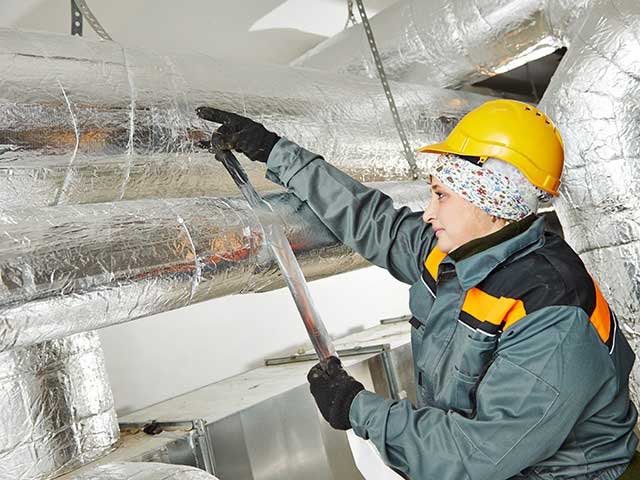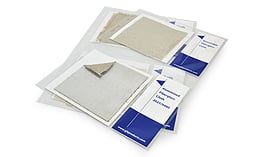Maintaining insulation’s efficiency and extending its service life often depends on protecting it from moisture intrusion and mechanical and chemical damage. Consider the installation’s mechanical, chemical, thermal and moisture conditions, as well as cost and appearance requirements when specifying jacketing and finish materials.
There are seven basic categories of protective coverings for industrial insulation:
Weather barriers: These are designed to prevent water, ice, snow or atmospheric residue from entering the insulation. Sunlight and ozone can also damage certain types of insulation. Metal or plastic jacketing may be used or the insulation can be coated with weather barrier mastic. The edges of the jacketing must overlap enough to prevent water penetration. Avoid the use of plastic jacketing materials with low resistance to UV rays unless protective measures are taken.
Vapor-retarders: These are designed to retard the passage of moisture vapor from the atmosphere to the insulation. Proper joint sealing is critical to the insulation system’s long-term quality and function. Vapor-retarders take four forms:

- Rigid jacketing: Plastic or PVC fabricated to the exact dimensions and of the proper thickness, and sealed vapor tight.
- Laminated foil jacketing: Laminated foils and treated or coated products that are applied to the insulation material at the factory or in the field. Additional sealing in the field may be necessary depending on temperature/humidity conditions. An additional protective jacket may also be required.
- Mastic applications: Provide a seamless coating but require time to dry.
- Flexible membranes: Flexible jacketing/cladding products are based on a wide range of materials including bituminous products, elastomeric membranes, and plastic sheeting. Flexible membranes may be single- or multi-ply combinations of materials and often come with a self-adhering system. Membranes are field or factory applied to the insulation material and provide varying degrees of mechanical, chemical, thermal and moisture properties. Always take changes to the fire retardancy of the installed system into consideration.
Mechanical abuse coverings: Rigid jacketing provides the strongest protection against mechanical abuse from personnel, equipment, machinery, etc. Also consider the compressive strength of the insulation material when designing for mechanical protection.
Corrosive atmosphere coverings: The nature of the corrosive atmosphere must be determined to select a compatible covering material. Various jacket materials can be applied to the insulation; mastics can be used if the atmosphere would damage the jacket materials.
Fire resistant coverings: These can be applied as jacketing and/or mastics. Fire resistant materials are determined by flame spread, smoke generated and fuel contributing factors. The total system should be considered when designing for fire resistance.
Appearance coverings and finishes: Various coatings, finishing cements, fitting covers and jackets may be selected for their appearance value in exposed areas.
Hygienic coverings: Coatings and jackets must present a smooth surface that resists fungal or bacterial growth in food or pharmaceutical processing areas. If steam, high pressure water, or chemical washdown cleaning techniques are used, select jackets that provide high mechanical strength, a wide temperature range, and chemical resistance.


